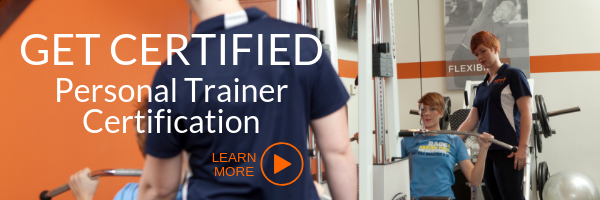Push-ups feel so good. The work to your shoulders, arms, and back all the while working your core, toning glutes, lengthening our chronically tight iliopsoas/hip flexor group… add to that the hundreds of standard variations you can employ to custom tailor the movement that’s right for your body…I can’t get enough. Let’s jump into how a push-up routine can change your life.
THE WHAT – Push-Up Variations
Don’t YouTube push-up routines. Okay, well you can if you want, but you’ll be overwhelmed with an insurmountable number of opinions and variants that are hard to parse out. Here’s a quick rundown of the variations that this healthcare practitioner deems safer for your joints and ready to be repped out!
- Standard: Your basic Goldilocks push-up…not too wide, not too narrow…juuuust right. Start on the floor and place hands under shoulders to get the position right. Keep it in a tight plank and lower the chest to an inch above the ground, hang out for a second, exhale on the way up.
- Seal Push-Ups: Keep the elbows in tight; palms should be right under your chest as far as placement. Good focus on triceps here.
- Wide Push-Ups: Really stressing the pec fibers here, placement is about 1-2 hand widths wider than on your standard push-up.
- Diamonds: Make a diamond shape with both thumbs and both index fingers. A fun twist to throw into a workout, diamond pushups emphasize delts, triceps, and pecs in unorthodox ways, helping to utilize some of that muscle confusion phenomenon to keep you from plateauing. Try to keep the diamond touching the center of your chest as far as hand placement goes – think “Iron Man”.
- Push-Up Shapes: From a standard position, shift weight slightly to one side, slowly lower yourself, shift across to the other side while in the lowered position, and use the other side to press up! It will end up looking like a square or rectangular shape that your movements are creating. This is my favorite push-up and offers the user a way to play around with loading each side differently with eccentric and concentric movements. I’d recommend 5 each direction to start.
- Shuffle Push-Ups: Either with your toes planted as a pivot, OR shuffling feet along laterally, you simply begin from a standard position, and after the concentric phase, shuffle one hand over to match (arrive next to) your planted hand, then that planted hand shuffles away, again, into a standard position. You’re simply shifting left to right after each push-up. Love the extra work that is built into this technique, and still allowing for more advanced users to change it into a more ballistic, bouncy form.
- Spider-Man Push-ups: Just like mountain-climbers, but with each push-up to a lowered position, you bring one knee up to a side-crunch to touch that ipsilateral elbow. Alternate each time. You’ll end up looking like our friendly neighborhood red/blue pajama monster as he scales buildings with his sci-fi sticky-fingers. A great way to invite the lower body and core into some less-than-isometric exercise!
- Spartan Push-Ups: My other favorite – but definitely a ballistic version of the push-up – not for beginners. Start in a standard position, but shift one hand a bit higher, and the other matching a little lower. Each push-up concentric phase should be forceful enough to give you a second in the air, using that hang time to switch hand position, bringing the lower hand higher, and the other lower, making a scissoring, “X” shape with your alternating. If you have prior shoulder injuries, make sure you ramp up to this slowly, assuring you can do the prior progressions just fine!
- Shoulder-Tap Push-ups: Each standard push-up is held at the top with ONE plant hand, while the other cross-touches the opposite shoulder before returning to its original placement.
- Knee-Tap Push-ups: After each standard push-up, bring one hand to cross-touch the opposite knee, which also raises to meet it. A wonderful cross-body oblique exercise forcing contralateral stability!
THE HOW – Suggested Implementation
My trusty go-to…sets of 10-12 reps. In isolation, you can always rep out 3-5 sets, but I’d recommend a more HIIT approach, using the variety to give you a more rounded workout. Start with the first 3 or 5 versions. Remove the easy ones as you get better from week to week! My favorite implementation is (once comfortable with each variant) is to aim for a number (50) and break them up into 5-10 each variant (whichever you feel you need to work on more).
As an example:
5 Standard > 5 Diamond >5 Shapes Left > 5 Shapes Right > 10 Shuffles > 10 Spider-man > 10 Spartan = 50!
Try to squeeze them into a minute or two if you’re feeling it. Or if you fancy, have your dog serve as a plate-vest and crush these out as s/he sits on ya! I recommend doing this first thing in the morning, first thing before bed, or as a warm-up or cool-down with your other daily routines. Squeeze it in somewhere!
As for coaching others, note their ease or difficulty level with each and seek to progress to more difficult variants. You can always add an incline or decline. You can also phase variants out as you master them. Also, work in some retraction/external shoulder rotation exercises like Wall Angels to more strategically balance this workout.
THE WHY – Benefits and Purpose
With our eyes forward, we’re built for pushing. It’s important to attend to that aspect of our builds, and waking up the key systems in our neuromyofascial system that should synchronize during that pushing motion. As we know, the body is an amazingly adaptive machine, and as such it’s important to keep it guessing by throwing variation into our routines. This keep us away from plateaus and stagnation, maximizing the reaped benefit of our efforts.
A quick workout like this serves as more than just a quick “pump”, by waking up our cardiovascular system, fine-tuning our motor neurons, and serving to strengthen the core and upper extremities. And if you’re into physique, a cursory internet search of “30-day push-up transformation” should demonstrate the benefits of these exercises nicely.
All in all, start simple. Try 10. Challenge yourself to do the next version. Do it again that night, or the next day. Keep it up day by day and you’ll see progress, feel great, and your body will thank you for it!




